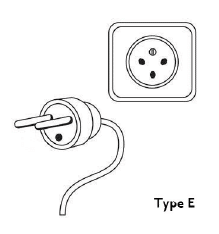SLOVAKIA

Fun Facts From Globus Tours
- Slovakia gained independence from Czechoslovakia on January 1, 1993. The same day, it formed its own constitution.
- Approximately 90 percent of the Slovaks have secondary education, which is among the highest rates in the European Union.
- The women of Slovakia—along with Lithuania and Poland—are the youngest to marry (at around 24 years) in the European Union.
A small Central European country and a new member of the European Union as of May 2004, Slovakia is a treasury of natural beauty and ethnic diversity. It is a land of immense forests, lakes, and rivers at the heartland of the Carpathian mountains.
Its present territory was ruled by the Hungarians for most of its history, though the Slavs settled here in the 8th century. Due to its outstanding location on the Danube, wedged between the Germanic northwest and the Hungarian southeast, the small Slavic nation of 5.4 million entered the 20th century as part of the Hungarian kingdom under the Habsburgs. It jointly created Czechoslovakia in 1919 and eventually reached full independence in 1993. It is currently enjoying increasing economic progress; winter tourism, dairy production, wood processing, and mining are major activities. The Slovaks— hospitable people very ready to welcome visitors from afar—are true to their unique identity and proud of their traditions.
VISAS, PASSPORTS, AND OTHER ENTRY REQUIREMENTS
Visas to Slovakia are not required for US citizens. If you hold a passport from another country, please check with your local consulate about requirements for travel to Slovakia. All passengers traveling internationally are required to have a passport. Please carry proper identification (your passport) on you and do not leave it in your suitcase or hotel room.
It is advisable to carry your passport with you at all times.
COUNTRY CODES
The country code for Slovakia is 421. When calling to Slovakia from overseas, dial your international access code (011 from the US/Canada), followed by the country code, area code, and phone number. Phone numbers in Slovakia are 7-8 digits in length. Dialing from the US/Canada: 011 421+##### ###.
CURRENCY
The official currency of Slovakia is the Euro.
Bank hours: 8 a.m. to 3 p.m., Monday through Friday.
1 EURO (€) = 100 Cents (c)
- Banknote denominations: €5, €10, €20, €50, €100, €200, €500
- Coin denominations: 1c, 2c, 5c, 10c, 20c, 50c, €1, €2
Euro coins differ according to country, but they can be used in any Eurozone state. Bank notes are of uniform . EU design (depicting European architectural styles throughout seven ages, from Classical to Modern times).
For the most current exchange rates, please go to our website at Globusjourneys.com/Currency.
Credit cards are widely accepted (mostly Visa and MasterCard), and you should have no problems using them in larger shops and restaurants. Smaller shops may ask you to pay in cash or have a minimum amount required to use a credit card.
BUDGETING AND SHOPPING
The following budget guidelines are just approximate values or starting values for meals and are per person. Actual prices will vary widely by restaurant and city within a country but below are some averages as provided by our experienced personnel.
- The approximate cost of a soft drink/mineral water/coffee is €2.
- An average lunch consisting of a salad or sandwich and a soda or water starts at approximately €6-10.
- Dinner at a mid-range restaurant with dessert and a non-alcoholic beverage starts at approximately €25.
Shopping specialties: Modranska folk ceramics, decorated eggs, bobbin lace, weaving, embroidery, woodcarvings, wooden toys, wiresmithing (decorative objects made from shaped wire), antiques.
TIPPING
For restaurant services, 10-15% is a reasonable amount for tipping. Tips are usually left in cash and not added to the credit card payment, given directly to the waiter and not left on the table.
For taxis, round up the fare to the nearest whole Euro.
Tip hotel staff €1 for room service.
A few coins will be needed for public restrooms.
ELECTRICITY AND ELECTRICAL OUTLETS
Outlets
Voltage for outlets is 230V. North American voltage is generally 110V. Therefore, you will need a converter for your travels. Adapters will be necessary to adapt your plug into the outlet, but these may not convert the voltage, so both devices are necessary.

TEMPERATURES
Slovak weather encompasses all four seasons, with warm, wet springs, hot, dry summers, calm and dry falls and cold winters. We recommend layers for hot days and cool nights. To help you plan, below are average low and high temperatures for Slovakia.

To convert to Celsius, subtract 30, then divide by 2. While not exact, this simple formula will give a close estimation.
FOOD SPECIALTIES
Meat (especially pork), potatoes, halušky (dumplings), thick sauces and cheeses made from ewe’s milk, (oštiepok, bryndza, parenica), kapustnica (cabbage soup), krvavnica (blood sausage), desserts including žemlovka (sweet pudding) and bábovka (pound cake), beers, wine and Borovička (a fruit liqueur similar to gin).
FEW WORDS OF THE LOCAL LANGUAGE
Slovak:

Hello!: Ahoj/Haló!, Goodbye: Zbohom, Please: Prosím, Thank you: Ďakujem, Yes: Ano, No: Nie, , 1: Jeden, 2: Dva, 3: Tri, 4: Štyri, 5: Pät, 6: Šest, 7: Sedem, 8: Osem, 9: Devät, 10: Desät, Where is…?: Kam/ kde je…?, Telephone: Telefón, Tea: Caj, Coffee: Káva, Bottled water: Balenú vodu, Cheers!: Na zdravie!, Restaurant check/bill: Účet, Have a nice day!: Pekny’ den!
U.S. DEPARTMENT OF STATE COUNTRY INFORMATION
Additional country-specific information for US citizens can be found on the US Government’s website www.travel.state.gov. Here, you can find the most up-to-date information about destination descriptions, passports/visas, safety and security, transportation, travel local laws, alerts/warnings, vaccinations, and more. For citizens of other nations, we recommend you consult your local consulate for travel information, regulations, and requirements.












